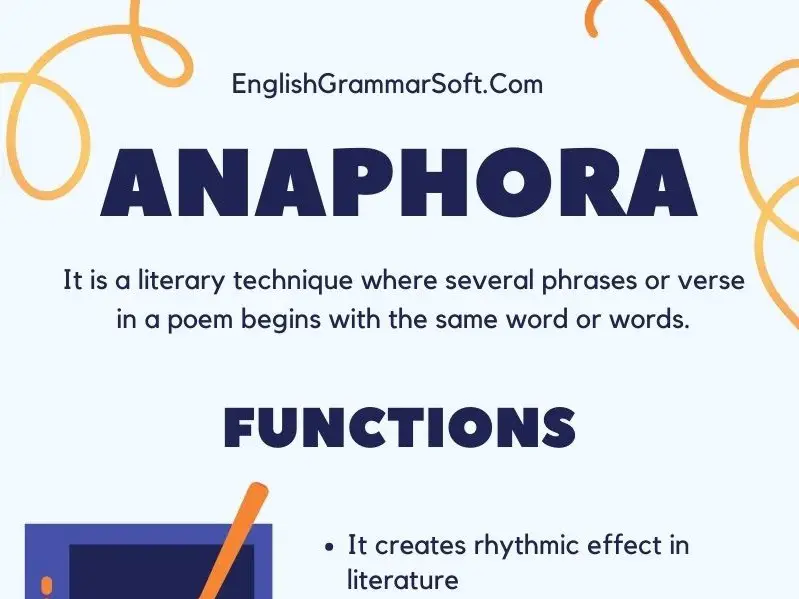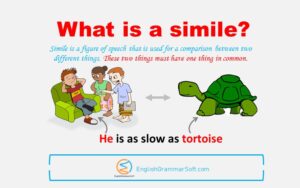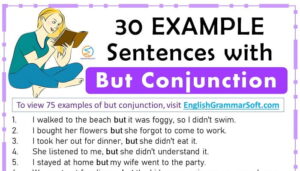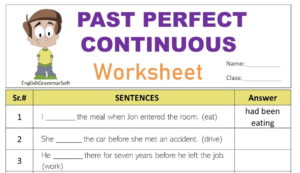Anaphora Examples, Functions & Use in Poetry
What is Anaphora?
Anaphora is a rhetorical device that uses repetition of the same word or phrase at the beginning of successive clauses. It can be used to denote an emphasis on certain words, to create rhythm in writing, and for other purposes as well. The repetition typically signals an emphasis on that particular word and may create a sense of rhythm in reading.
The most common form of anaphora is known as epiphora which means “repetition at the end”. This device typically comes after a thought has been expressed and then expanded upon in order to emphasize what was just said. In this way, it differs from many other forms of anaphora because it does not use repeating words within one clause or sentence but rather sets off a whole sentence.
There are many examples of Anaphora throughout history; one can find it in speeches by Martin Luther King Jr., poetry by Charles Dickens, and Pete Seeger. Some examples of anaphora in poetry are also covered in this post.
The word “anaphora” was originated from the Late Greek word in the 16th century.
Definition:
It is a literary technique where several phrases or verse in a poem begins with the same word or words. In ‘anaphora’ certain words or phrases is repeated at the beginning of sentences and it creates a rhythm to the passage. It is often used in ballads and songs, however, it is common in many literary forms. Writers use this technique to emphasize a specific idea or and to create an artistic and rhetoric effect.
Functions of Anaphora
- It creates rhythmic effect in literature
- It is easy to remember
- It gives importance to difference ideas
- It gives artistic effect in passage, prose or poetry.
- It appeals the emotions the audience and encourages the readers and audience.
- To emphasize some specific point.
- To highlight some issue.
- To clear a point.
- To create beauty.
Common of Examples of Anaphora
- I came, I saw, I conquered
- Mad world, Mad King, Mad Composition
- It was the best of times, it was the worst of times,
- It was the age of wisdom, it was the age of foolishness
- My life is my goal. My life is my inspiration. My life is my purpose.
- I want my money right now, right here, all right?
- The wrong person was selected for the wrong jobs, at the wrong time, for the wrong purpose.
Use of Anaphora in Poetry
Example 1. Aunt Jennifer’s Tigers by “Adrienne Rich”
A woman drew her long black hair out tight
And fiddled whisper music on those strings
And bats with baby faces in the violet light
Whistled, and bet their wings
And crawled head downward down a blackened wall
And upside down in air were towers
Tolling reminiscent bells, that kept the hours
And voices signing out of empty cisterns and exhausted wells.
Here in the above stanza, the continuous use of word “And” is an example of Anaphora.
Example 2: Troilus and Criseyde by “Geoffrey Chaucer”
Swich fyn hath, lo, this Trolius for love
Swich fyn hath al his grete worthiness
Swich fyn hath his estat real above,
Swich fyn his lust, swich fyn hath his noblesse
Swich fyn hath false worldes brotelnesse
And thus bigan his loving of Criseyde,
As I have told, and in this wise he deyde”.
Here in the above stanza, the word “Swich fyn” has been mostly used in the lines, which is the example of anaphora.
Example 3: Turn, Turn, Turn by “Pete Seeger”
“There is a season-turn, turn, turn
And a time to every purpose under heaven
A time to be born, a time to die
A time to plant, a time to reap
A time to kill, a time to heal
A time to laugh, a time to weep”
The highlighted words in the above stanza are examples of anaphora.
Example No.4: A tale of two cities by Charles Dickens
It was the best of times, it was the worst of times,
It was the age of wisdom, it was the age of foolishness,
It was the epoch of incredulity, it was the season of light,
It was the season of darkness”, it was the spring of hope,
It was the winter of despair, we had everything before us, we had nothing before us, we were all going direct to Heaven, we were all going direct the other way.”
Example 5: “I have a dream” speech by Martin Luther King, Jr.
I have a dream that one day this nation will rise up and live out the true meaning of its creed: “We hold these truths to be self-evident: that all men are created equal.”
I have a dream that one day on the red hills of Georgia the sons of former slaves and the sons of former slave owners will be able to sit down together at a table of brotherhood.
I have a dream that one day even the state of Mississippi, a state sweltering with the heat of injustice, sweltering with the heat of oppression, will be transformed into an oasis of freedom and justice.
I have a dream that my four little children will one day live in a nation where they will not be judged by the color of their skin but by the content of their character.
Example No. 6: Richard II by William Shakespeare
“This blessed plot, this earth, this realm, this England,
This nurse, this teeming womb of royal kings,
This land of such dear souls, this dear land,”
The highlighted words in the above para are examples of Anaphora. The repetition of word “this” is creating an emotional effect and highlights the importance of the country England.
Difference between Anaphora and Repetition
‘Repetition’ is the words or group of words in a piece of writing anywhere in a close space. For example, “water, water, everywhere, nor any drop to drink.” ‘Anaphora’ is the group of words that must come at the beginning of consecutive clauses, sentences, or paragraphs.

Further Reading
- Anaphora and its Types
- Examples of Assonance
- Examples of Innuendo
- Examples of Exclamation in Literature
- Onomatopoeia Examples
- Interrogation Examples in Literature
- Types of Paradox in Literature
- Oxymoron Examples from Literature
- Synecdoche Examples in Literature
- Figures of Speech with Examples
- Antithesis Examples in Literature
- Euphemism Figure of Speech
- Pun Figure of Speech
- Metonymy Classification & Examples
- What is a simile in literature? How to write a good simile?
- Types of Metaphor with Examples
- Apostrophe as a Figure of Speech
- Personification with Examples
- Hyperbole Definition and Examples
- Fable Meaning and Examples in Literature
- What is Epigram in Figure of Speech?







